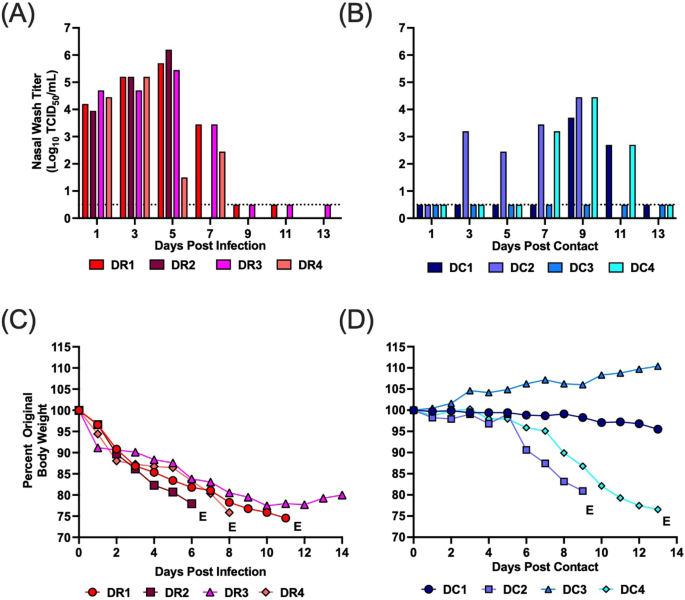2024-05-16 ペンシルベニア州立大学(PennState)
<関連情報>
- https://www.psu.edu/news/research/story/h5n1-virus-2022-mink-outbreak-capable-inefficient-airborne-transmission/
- https://www.nature.com/articles/s41467-024-48475-y
ミンク由来の高病原性H5N1インフルエンザウイルスのリスク評価 Risk assessment of a highly pathogenic H5N1 influenza virus from mink
Katherine H. Restori,Kayla M. Septer,Cassandra J. Field,Devanshi R. Patel,David VanInsberghe,Vedhika Raghunathan,Anice C. Lowen & Troy C. Sutton
Nature Communications Published:15 May 2024
DOI:https://doi.org/10.1038/s41467-024-48475-y

Abstract
Outbreaks of highly pathogenic H5N1 clade 2.3.4.4b viruses in farmed mink and seals combined with isolated human infections suggest these viruses pose a pandemic threat. To assess this threat, using the ferret model, we show an H5N1 isolate derived from mink transmits by direct contact to 75% of exposed ferrets and, in airborne transmission studies, the virus transmits to 37.5% of contacts. Sequence analyses show no mutations were associated with transmission. The H5N1 virus also has a low infectious dose and remains virulent at low doses. This isolate carries the adaptive mutation, PB2 T271A, and reversing this mutation reduces mortality and airborne transmission. This is the first report of a H5N1 clade 2.3.4.4b virus exhibiting direct contact and airborne transmissibility in ferrets. These data indicate heightened pandemic potential of the panzootic H5N1 viruses and emphasize the need for continued efforts to control outbreaks and monitor viral evolution.


